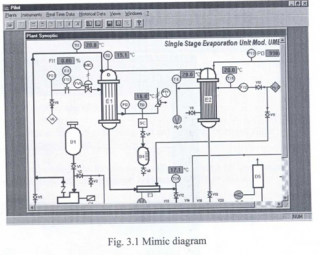The falling film evaporators are used industrially to concentrate solutions, especially solutions with heat sensitive components.
This type of evaporator is desirable, from a product point of view, as it can be operate with very low temperature differences between the heating media and the boiling liquid, short holding time (typically just few seconds) and a good control of the temperature of the product to be concentrated.
The falling film evaporator has a very small hold up of liquid. This is advantageous during operations (quick start up high response to changing of operative conditions), avoiding browning of sensitive product and during cleaning requiring a minimum of cleaning liquid. Further the amount of product in the evaporator is reduced and the surface from which the evaporation takes place is increased.
Falling film evaporators are highly responsive to alterations of parameters such as energy supply, vacuum, feed rate, concentrations, etc. When well controlled, they can produce a very consistent concentrated product.
These characteristics make the falling film evaporator particularly suitable for heat-sensitive products, and it is today the most frequently used type of evaporator.
The evaporator consists of a number of tubes built together side by side. At each end the tubes are fixed to tube plates, and finally the tube bundle is enclosed by a jacket.
The liquid to be evaporated is evenly distributed on the inner surface of a tube and will flow downwards forming a thin film, from which the boiling/evaporation will take place because of the heat applied by the steam. This gravity-induced downward movement is increasingly augmented by the counter-current vapor flow.
The steam will condense and flow downwards on the outer surface of the tube.
The steam is introduced through the jacket. The space between the tubes is thus forming the heating section. The inner side of the tubes is called the boiling section. Together they form the so-called calandria. The concentrated liquid leaves the calandria at the bottom part and the vapor leaves at the top. The heating steam, which condenses on the outer surface of the tubes, is collected as condensate at the bottom part of the heating section, from where it is discharged by means of a steam trap.
Falling film evaporators are common in the manufacture of concentrated orange juice and condensed milk. They are attractive as a concentration process because of their energy efficiency and thermal gentleness.

